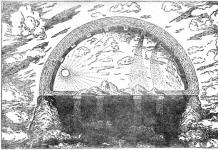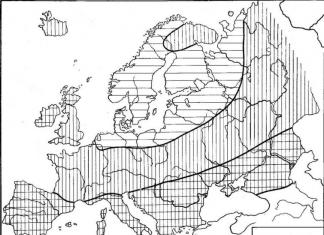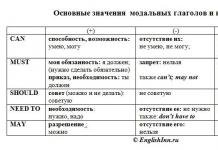), and it became generally accepted after the work of Euler. This designation comes from the initial letter of the Greek words περιφέρεια - circle, periphery and περίμετρος - perimeter.
Ratings
- 510 decimal places: π ≈ 3.141 592 653 589 793 238 462 643 383 279 502 884 197 169 399 375 105 820 974 944 592 307 816 406 286 208 998 628 034 825 342 117 067 982 148 086 513 282 306 647 093 844 609 550 582 231 725 359 408 128 481 117 450 284 102 701 938 521 105 559 644 622 948 954 930 381 964 428 810 975 665 933 446 12 8 475 648 233 786 783 165 271 201 909 145 648 566 923 460 348 610 454 326 648 213 393 607 260 249 141 273 724 587 006 606 315 588 174 881 520 920 962 829 254 091 715 364 367 892 590 360 011 330 530 8 820 466 521 384 146 951 941 511 609 433 057 270 365 759 591 953 092 186 117 381 932 611 793 105 118 548 074 462 379 962 749 567 351 885 752 724 891 227 938 183 011 949 129 833 673 362…
Properties
Ratios
There are many known formulas with the number π:

- Wallis formula:
- Euler's identity:
- T.n. "Poisson integral" or "Gauss integral"


Transcendence and irrationality
Unsolved problems
- It is not known whether the numbers π and e algebraically independent.
- It is unknown whether the numbers π + e , π − e , π e , π / e , π e , π π , e e transcendental.
- Until now, nothing is known about the normality of the number π; it is not even known which of the digits 0-9 appear in the decimal representation of the number π an infinite number of times.
Calculation history


and Chudnovsky
Mnemonic rules
So that we do not make mistakes, We must read correctly: Three, fourteen, fifteen, ninety-two and six. You just have to try and remember everything as it is: Three, fourteen, fifteen, ninety-two and six. Three, fourteen, fifteen, nine, two, six, five, three, five.
2. So that do science, Everyone should know this.
You can just try and repeat more often: “Three, fourteen, fifteen, Nine, twenty-six and five.”
Count the number of letters in each word in the phrases below (
excluding punctuation marks
(The second mnemonic is correct (with rounding of the last digit) only when using pre-reform spelling: when counting the number of letters in words, it is necessary to take into account hard signs!)
Another version of this mnemonic notation:
This I know and remember perfectly:
And many signs are unnecessary for me, in vain.
Let's trust our enormous knowledge
Those who counted the numbers of the armada.
If you follow the poetic meter, you can quickly remember:
Three, fourteen, fifteen, nine two, six five, three five
Eight nine, seven and nine, three two, three eight, forty six
Two six four, three three eight, three two seven nine, five zero two
Eight eight and four, nineteen, seven, one
Fun facts
Notes
See what “Pi” is in other dictionaries:
number- Receiving source: GOST 111 90: Sheet glass. Specifications original document See also related terms: 109. The number of betatron oscillations ... Dictionary-reference book of terms of normative and technical documentation
Noun, s., used. very often Morphology: (no) what? numbers, what? number, (see) what? number, what? number, about what? about number; pl. What? numbers, (no) what? numbers, why? numbers, (see) what? numbers, what? numbers, about what? about numbers mathematics 1. By number... ... Dictionary Dmitrieva
NUMBER, numbers, plural. numbers, numbers, numbers, cf. 1. The concept that serves as an expression of quantity, something with the help of which objects and phenomena are counted (mat.). Integer. A fractional number. Named number. Prime number. (see simple 1 in 1 value).… … Ushakov's Explanatory Dictionary
An abstract designation devoid of special content for any member of a certain series, in which this member is preceded or followed by some other specific member; abstract individual feature that distinguishes one set from... ... Philosophical Encyclopedia
Number- Number is a grammatical category expressing quantitative characteristics objects of thought. Grammatical number is one of the manifestations of the more general linguistic category of quantity (see Language category) along with the lexical manifestation (“lexical... ... Linguistic encyclopedic dictionary
A number approximately equal to 2.718, which is often found in mathematics and natural sciences. For example, when a radioactive substance decays after time t, a fraction equal to e kt remains of the initial amount of the substance, where k is a number,... ... Collier's Encyclopedia
A; pl. numbers, sat, slam; Wed 1. A unit of account expressing a particular quantity. Fractional, integer, prime hours. Even, odd hours. Count in round numbers (approximately, counting in whole units or tens). Natural h. (positive integer... encyclopedic Dictionary
Wed. quantity, by count, to the question: how much? and the very sign expressing quantity, number. Without number; there is no number, without counting, many, many. Set up cutlery according to the number of guests. Roman, Arabic or church numbers. Integer, opposite. fraction... ... Dahl's Explanatory Dictionary
NUMBER, a, plural. numbers, sat, slam, cf. 1. The basic concept of mathematics is quantity, with the help of which calculation is made. Integer h. Fractional h. Real h. Complex h. Natural h. (integer positive number). Prime number (natural number, not... ... Ozhegov's Explanatory Dictionary
NUMBER "E" (EXP), irrational number, serving as the basis natural logarithms. This real decimal number, an infinite fraction equal to 2.7182818284590..., is the limit of the expression (1/) as n tends to infinity. In fact,… … Scientific and technical encyclopedic dictionary
Today is the birthday of Pi, which, on the initiative of American mathematicians, is celebrated on March 14 at 1 hour and 59 minutes in the afternoon. This is connected with a more precise value of Pi: we are all accustomed to considering this constant as 3.14, but the number can be continued as follows: 3, 14159... Translating this into a calendar date, we get 03.14, 1:59.
Photo: AiF/ Nadezhda Uvarova
Professor of the Department of Mathematical and Functional Analysis of South Ural State University Vladimir Zalyapin says that July 22 should still be considered “Pi day”, because in the European date format this day is written as 22/7, and the value of this fraction is approximately equal to the value of Pi .
“The history of the number that gives the ratio of the circumference to the diameter of the circle goes back to ancient times,” says Zalyapin. - Already the Sumerians and Babylonians knew that this ratio does not depend on the diameter of the circle and is constant. One of the first mentions of the number Pi can be found in the texts Egyptian scribe Ahmes(around 1650 BC). The ancient Greeks, who borrowed a lot from the Egyptians, contributed to the development of this mysterious quantity. According to the legend, Archimedes was so carried away by calculations that he did not notice how the Roman soldiers took him hometown Syracuse. When the Roman soldier approached him, Archimedes shouted in Greek: “Don’t touch my circles!” In response, the soldier stabbed him with a sword.
Plato received a fairly accurate value of Pi for his time - 3.146. Ludolf van Zeilen spent most of his life calculating the first 36 decimal places of Pi, and they were engraved on his tombstone after his death."Irrational and abnormal
According to the professor, at all times the pursuit of calculating new decimal places was determined by the desire to obtain the exact value of this number. It was assumed that Pi was rational and could therefore be expressed as a simple fraction. And this is fundamentally wrong!
The number Pi is also popular because it is mystical. Since ancient times, there has been a religion of worshipers of the constant. In addition to the traditional value of Pi - a mathematical constant (3.1415...), expressing the ratio of the circumference of a circle to its diameter, there are many other meanings of the number. Such facts are interesting. In the process of measuring the dimensions of the Great Pyramid of Giza, it turned out that it has the same ratio of height to the perimeter of its base as the radius of a circle to its length, that is, ½ Pi.
If you calculate the length of the Earth's equator using Pi to the ninth decimal place, the error in the calculations will be only about 6 mm. Thirty-nine decimal places in Pi are enough to calculate the circumference of a circle encircling known space objects in the Universe, with an error no greater than the radius of a hydrogen atom!
The study of Pi includes mathematical analysis. Photo: AiF/ Nadezhda Uvarova
Chaos in numbers
According to a mathematics professor, in 1767 Lambert established the irrationality of the number Pi, that is, the impossibility of representing it as a ratio of two integers. This means that the sequence of decimal places of Pi is chaos embodied in numbers. In other words, the “tail” of decimal places contains any number, any sequence of numbers, any texts that were, are and will be, but it’s just not possible to extract this information!“It is impossible to know the exact value of Pi,” continues Vladimir Ilyich. - But these attempts are not abandoned. In 1991 Chudnovsky achieved a new 2260000000 decimal places of the constant, and in 1994 - 4044000000. After that, the number of correct digits of Pi increased like an avalanche.”
Chinese holds world record for memorizing Pi Liu Chao, who was able to remember 67,890 decimal places without error and reproduce them within 24 hours and 4 minutes.
About the “golden ratio”
By the way, the connection between “pi” and another amazing quantity - the golden ratio - has never actually been proven. People have long noticed that the “golden” proportion - also known as the number Phi - and the number Pi divided by two differ from each other by less than 3% (1.61803398... and 1.57079632...). However, for mathematics, these three percent are too significant a difference to consider these values identical. In the same way, we can say that the Pi number and the Phi number are relatives of another well-known constant - the Euler number, since the root of it is close to half the Pi number. One half of Pi is 1.5708, Phi is 1.6180, the root of E is 1.6487.

This is only part of the value of Pi. Photo: Screenshot
Pi's birthday
In South Ural state university Constant's birthday is celebrated by all mathematics teachers and students. It has always been this way - it cannot be said that interest appeared only in last years. The number 3.14 is even welcomed with a special holiday concert!
March 14, 2012
On March 14, mathematicians celebrate one of the most unusual holidays - International Pi Day. This date was not chosen by chance: the numerical expression π (Pi) is 3.14 (3rd month (March) 14th).
For the first time, schoolchildren encounter this unusual number in the elementary grades when studying circles and circumferences. The number π is a mathematical constant that expresses the ratio of the circumference of a circle to the length of its diameter. That is, if you take a circle with a diameter equal to one, then the circumference will be equal to the number “Pi”. The number π has an infinite mathematical duration, but in everyday calculations a simplified spelling of the number is used, leaving only two decimal places - 3.14.
In 1987, this day was celebrated for the first time. Physicist Larry Shaw from San Francisco noticed that in the American date system (month/day), the date March 14 - 3/14 coincides with the number π (π = 3.1415926...). Typically celebrations begin at 1:59:26 pm (π = 3.14 15926 …).
History of Pi
It is assumed that the history of the number π begins in Ancient Egypt. Egyptian mathematicians determined the area of a circle with diameter D as (D-D/9) 2. From this entry it is clear that at that time the number π was equated to the fraction (16/9) 2, or 256/81, i.e. π 3.160...
In the VI century. BC. in India, in the religious book of Jainism, there are entries indicating that the number π at that time was accepted as equal square root out of 10, which gives the fraction 3.162...
In the 3rd century. BC Archimedes in his short work “Measurement of a Circle” substantiated three propositions:
- Every circle is equal in size right triangle, the legs of which are respectively equal to the length of the circle and its radius;
- The areas of a circle are related to a square built on a diameter as 11 to 14;
- The ratio of any circle to its diameter is less than 3 1/7 and greater than 3 10/71.
Archimedes justified the last position by sequentially calculating the perimeters of regular inscribed and circumscribed polygons by doubling the number of their sides. According to the exact calculations of Archimedes, the ratio of circumference to diameter is between the numbers 3 * 10 / 71 and 3 * 1/7, which means that the number “pi” is 3.1419... The true value of this ratio is 3.1415922653...
In the 5th century BC. Chinese mathematician Zu Chongzhi found a more accurate value for this number: 3.1415927...
In the first half of the 15th century. The astronomer and mathematician Kashi calculated π with 16 decimal places.
A century and a half later in Europe, F. Viet found the number π with only 9 regular decimal places: he made 16 doublings of the number of sides of polygons. F. Viet was the first to notice that π can be found using the limits of certain series. This discovery had great importance, it made it possible to calculate π with any accuracy.
In 1706, the English mathematician W. Johnson introduced the notation for the ratio of the circumference of a circle to its diameter and designated it with the modern symbol π as the first letter Greek word periferia-circle.
For a long period of time, scientists around the world tried to unravel the mystery of this mysterious number.
 What is the difficulty in calculating the value of π?
What is the difficulty in calculating the value of π?
The number π is irrational: it cannot be expressed as a fraction p/q, where p and q are integers, this number cannot be a root algebraic equation. You cannot specify algebraic or differential equation, the root of which will be π, therefore this number is called transcendental and is calculated by considering any process and is refined by increasing the steps of the process under consideration. Multiple attempts to calculate maximum amount signs of the number π have led to the fact that today, thanks to modern computing technology, it is possible to calculate the sequence with an accuracy of 10 trillion digits after the decimal point.
The digits of the decimal representation of π are quite random. In the decimal expansion of a number, you can find any sequence of digits. It is assumed that in given number in encrypted form there are all written and unwritten books, any information that can be imagined is in the number π.
You can try to unravel the mystery of this number yourself. Of course, it will not be possible to write down the number “Pi” in full. But for the most curious, I suggest considering the first 1000 digits of the number π = 3,
1415926535 8979323846 2643383279 5028841971 6939937510 5820974944 5923078164 0628620899 8628034825 3421170679 8214808651 3282306647 0938446095 5058223172 5359408128 4811174502 8410270193 8521105559 6446229489 5493038196 4428810975 6659334461 2847564823 3786783165 2712019091 4564856692 3460348610 4543266482 1339360726 0249141273 7245870066 0631558817 4881520920 9628292540 9171536436 7892590360 0113305305 4882046652 1384146951 9415116094 3305727036 5759591953 0921861173 8193261179 3105118548 0744623799 6274956735 1885752724 8912279381 8301194912 9833673362 4406566430 8602139494 6395224737 1907021798 6094370277 0539217176 2931767523 8467481846 7669405132 0005681271 4526356082 7785771342 7577896091 7363717872 1468440901 2249534301 4654958537 1050792279 6892589235 4201995611 2129021960 8640344181 5981362977 4771309960 5187072113 4999999837 2978049951 0597317328 1609631859 5024459455 3469083026 4252230825 3344685035 2619311881 7101000313 7838752886 5875332083 8142061717 7669147303 5982534904 2875546873 1159562863 8823537875 9375195778 1857780532 1712268066 1300192787 6611195909 2164201989
Remember the number "Pi"
Currently using computer technology calculated to ten trillion digits of pi. The maximum number of numbers that a person could remember is one hundred thousand.
To remember the maximum number of digits of the number “Pi”, various poetic “memories” are used, in which words with a certain number of letters are arranged in the same sequence as the numbers in the number “Pi”: 3.1415926535897932384626433832795…. To restore the number, you need to count the number of characters in each word and write it down in order.
So I know the number called “Pi”. Well done! (7 digits)
So Misha and Anyuta came running
They wanted to know the number Pi. (11 digits)
This I know and remember perfectly:
And many signs are unnecessary for me, in vain.
Let's trust our enormous knowledge
Those who counted the numbers of the armada. (21 digits)
Once at Kolya and Arina's
We ripped the feather beds.
The white fluff was flying and spinning,
Showered, froze,
Satisfied
He gave it to us
Old women's headache.
Wow, the spirit of fluff is dangerous! (25 characters)
You can use rhyming lines to help you remember the right number.
So that we don't make mistakes,
You need to read it correctly:
Ninety two and six
If you try really hard,
You can immediately read:
Three, fourteen, fifteen,
Ninety two and six.
Three, fourteen, fifteen,
Nine, two, six, five, three, five.
To do science,
Everyone should know this.
You can just try
And repeat more often:
"Three, fourteen, fifteen,
Nine, twenty-six and five."
Still have questions? Want to know more about Pi?
To get help from a tutor, register.
The first lesson is free!
What is Pi equal to? we know and remember from school. It is equal to 3.1415926 and so on... To an ordinary person it is enough to know that this number is obtained by dividing the circumference of a circle by its diameter. But many people know that the number Pi appears in unexpected areas not only of mathematics and geometry, but also in physics. Well, if you delve into the details of the nature of this number, you will notice many surprising things among the endless series of numbers. Is it possible that Pi is hiding the deepest secrets of the universe?
Infinite number
The number Pi itself appears in our world as the length of a circle whose diameter is equal to one. But, despite the fact that the segment equal to Pi is quite finite, the number Pi begins as 3.1415926 and goes to infinity in rows of numbers that are never repeated. First amazing fact is that this number, used in geometry, cannot be expressed as a fraction of whole numbers. In other words, you cannot write it as the ratio of two numbers a/b. In addition, the number Pi is transcendental. This means that there is no equation (polynomial) with integer coefficients whose solution would be the number Pi.
The fact that the number Pi is transcendental was proved in 1882 by the German mathematician von Lindemann. It was this proof that became the answer to the question of whether it is possible, using a compass and a ruler, to draw a square whose area is equal to the area of a given circle. This problem is known as the search for squaring a circle, which has worried humanity since ancient times. It seemed that this problem had a simple solution and was about to be solved. But it was precisely the incomprehensible property of the number Pi that showed that there was no solution to the problem of squaring the circle.
For at least four and a half millennia, humanity has been trying to obtain an increasingly accurate value for Pi. For example, in the Bible in the Third Book of Kings (7:23), the number Pi is taken to be 3.
The Pi value of remarkable accuracy can be found in the Giza pyramids: the ratio of the perimeter and height of the pyramids is 22/7. This fraction gives an approximate value of Pi equal to 3.142... Unless, of course, the Egyptians set this ratio by accident. The same value was already obtained in relation to the calculation of the number Pi in the 3rd century BC by the great Archimedes.
In the Papyrus of Ahmes, an ancient Egyptian mathematics textbook that dates back to 1650 BC, Pi is calculated as 3.160493827.
In ancient Indian texts around the 9th century BC, the most accurate value was expressed by the number 339/108, which was equal to 3.1388...
For almost two thousand years after Archimedes, people tried to find ways to calculate Pi. Among them were both famous and unknown mathematicians. For example, the Roman architect Marcus Vitruvius Pollio, the Egyptian astronomer Claudius Ptolemy, the Chinese mathematician Liu Hui, the Indian sage Aryabhata, the medieval mathematician Leonardo of Pisa, known as Fibonacci, the Arab scientist Al-Khwarizmi, from whose name the word “algorithm” appeared. All of them and many other people were looking for the most accurate methods for calculating Pi, but until the 15th century they never got more than 10 decimal places due to the complexity of the calculations.
Finally, in 1400, the Indian mathematician Madhava from Sangamagram calculated Pi with an accuracy of 13 digits (although he was still mistaken in the last two).
Number of signs
 In the 17th century, Leibniz and Newton discovered the analysis of infinitesimal quantities, which made it possible to calculate Pi more progressively - through power series and integrals. Newton himself calculated 16 decimal places, but did not mention it in his books - this became known after his death. Newton claimed that he calculated Pi purely out of boredom.
In the 17th century, Leibniz and Newton discovered the analysis of infinitesimal quantities, which made it possible to calculate Pi more progressively - through power series and integrals. Newton himself calculated 16 decimal places, but did not mention it in his books - this became known after his death. Newton claimed that he calculated Pi purely out of boredom.
Around the same time, other lesser-known mathematicians also came forward and proposed new formulas for calculating the number Pi through trigonometric functions.
For example, this is the formula used to calculate Pi by astronomy teacher John Machin in 1706: PI / 4 = 4arctg(1/5) – arctg(1/239). Using analytical methods, Machin derived the number Pi to one hundred decimal places from this formula.
 By the way, in the same 1706, the number Pi received an official designation in the form greek letter: William Jones used it in his work on mathematics, taking the first letter of the Greek word "periphery", which means "circle". The great Leonhard Euler, born in 1707, popularized this designation, now known to any schoolchild.
By the way, in the same 1706, the number Pi received an official designation in the form greek letter: William Jones used it in his work on mathematics, taking the first letter of the Greek word "periphery", which means "circle". The great Leonhard Euler, born in 1707, popularized this designation, now known to any schoolchild.
Before the era of computers, mathematicians focused on calculating as many signs as possible. In this regard, sometimes funny things arose. Amateur mathematician W. Shanks calculated 707 digits of Pi in 1875. These seven hundred signs were immortalized on the wall of the Palais des Discoverys in Paris in 1937. However, nine years later, observant mathematicians discovered that only the first 527 characters were correctly calculated. The museum had to incur significant expenses to correct the error - now all the figures are correct.
When computers appeared, the number of digits of Pi began to be calculated in completely unimaginable orders.
 One of the first electronic computers, ENIAC, created in 1946, was enormous in size and generated so much heat that the room warmed up to 50 degrees Celsius, calculated the first 2037 digits of Pi. This calculation took the machine 70 hours.
One of the first electronic computers, ENIAC, created in 1946, was enormous in size and generated so much heat that the room warmed up to 50 degrees Celsius, calculated the first 2037 digits of Pi. This calculation took the machine 70 hours.
As computers improved, our knowledge of Pi moved further and further into infinity. In 1958, 10 thousand digits of the number were calculated. In 1987, the Japanese calculated 10,013,395 characters. In 2011, Japanese researcher Shigeru Hondo exceeded the 10 trillion character mark.
Where else can you meet Pi?
So, often our knowledge about Pi remains at school level, and we know for sure that this number is irreplaceable primarily in geometry.
In addition to formulas for the length and area of a circle, the number Pi is used in formulas for ellipses, spheres, cones, cylinders, ellipsoids, and so on: in some places the formulas are simple and easy to remember, and in others they contain very complex integrals.
Then we can meet the number Pi in mathematical formulas, where, at first glance, geometry is not visible. For example, indefinite integral from 1/(1-x^2) is equal to Pi.
Pi is often used in series analysis. As an example, here is a simple series that converges to Pi:
1/1 – 1/3 + 1/5 – 1/7 + 1/9 – …. = PI/4
Among the series, Pi appears most unexpectedly in the famous Riemann zeta function. It’s impossible to talk about it in a nutshell, let’s just say that someday the number Pi will help find a formula for calculating prime numbers.
And absolutely surprisingly: Pi appears in two of the most beautiful “royal” formulas of mathematics - Stirling’s formula (which helps to find the approximate value of the factorial and gamma function) and Euler’s formula (which connects as many as five mathematical constants).
However, the most unexpected discovery awaited mathematicians in probability theory. The number Pi is also there.
For example, the probability that two numbers will be relatively prime is 6/PI^2.
Pi appears in Buffon's needle-throwing problem, formulated in the 18th century: what is the probability that a needle thrown onto a lined piece of paper will cross one of the lines. If the length of the needle is L, and the distance between the lines is L, and r > L, then we can approximately calculate the value of Pi using the probability formula 2L/rPI. Just imagine - we can get Pi from random events. And by the way, Pi is present in the normal probability distribution, appears in the equation of the famous Gaussian curve. Does this mean that Pi is even more fundamental than simply the ratio of circumference to diameter?
We can also meet Pi in physics. Pi appears in Coulomb's law, which describes the force of interaction between two charges, in Kepler's third law, which shows the period of revolution of a planet around the Sun, and even appears in the arrangement of the electron orbitals of the hydrogen atom. And what is again most incredible is that the number Pi is hidden in the formula of the Heisenberg uncertainty principle - the fundamental law of quantum physics.
Secrets of Pi
In Carl Sagan's novel Contact, on which the film of the same name is based, aliens tell the heroine that among the signs of Pi there is a secret message from God. From a certain position, the numbers in the number cease to be random and represent a code in which all the secrets of the Universe are written.
This novel actually reflected a mystery that has occupied the minds of mathematicians around the world: is Pi a normal number in which the digits are scattered with equal frequency, or is there something wrong with this number? And although scientists are inclined to the first option (but cannot prove it), the number Pi looks very mysterious. A Japanese man once calculated how many times the numbers 0 to 9 occur in the first trillion digits of Pi. And I saw that the numbers 2, 4 and 8 were more common than the others. This may be one of the hints that Pi is not entirely normal, and the numbers in it are indeed not random.
Let's remember everything we read above and ask ourselves what other irrational and transcendental number Is that common in the real world?
And there are more oddities in store. For example, the sum of the first twenty digits of Pi is 20, and the sum of the first 144 digits is equal to the “number of the beast” 666.
 The main character of the American TV series “Suspect,” Professor Finch, told students that due to the infinity of the number Pi, any combination of numbers can be found in it, starting from the numbers of your date of birth to more complex numbers. For example, at position 762 there is a sequence of six nines. This position is called the Feynman point after the famous physicist who noticed this interesting combination.
The main character of the American TV series “Suspect,” Professor Finch, told students that due to the infinity of the number Pi, any combination of numbers can be found in it, starting from the numbers of your date of birth to more complex numbers. For example, at position 762 there is a sequence of six nines. This position is called the Feynman point after the famous physicist who noticed this interesting combination.
We also know that the number Pi contains the sequence 0123456789, but it is located at the 17,387,594,880th digit.
All this means that in the infinity of the number Pi one can find not only interesting combinations of numbers, but also the encoded text of “War and Peace”, the Bible and even the Main Secret of the Universe, if such exists.
By the way, about the Bible. The famous popularizer of mathematics, Martin Gardner, stated in 1966 that the millionth digit of Pi (at that time still unknown) would be the number 5. He explained his calculations by the fact that in the English version of the Bible, in the 3rd book, 14th chapter, 16 verse (3-14-16) the seventh word contains five letters. The millionth figure was reached eight years later. It was the number five.
Is it worth asserting after this that the number Pi is random?
The number π shows how many times the circumference of a circle is greater than its diameter. It doesn't matter what size the circle is - as was noticed at least 4 thousand years ago, the ratio always remains the same. The only question is what it equals.
To calculate it approximately, an ordinary thread is enough. Greek Archimedes in the 3rd century BC. used more tricky way. He drew circles inside and outside regular polygons. By adding the lengths of the sides of the polygons, Archimedes more and more accurately determined the fork in which the number π is located, and realized that it was approximately equal to 3.14.
The polygon method was used for almost 2 thousand years after Archimedes; this made it possible to find out the value of the number π up to the 38th decimal place. One or two more signs - and you can calculate with atomic precision the length of a circle with a diameter like the Universe.
While some scientists used the geometric method, others realized that the number π could be calculated by adding, subtracting, dividing or multiplying other numbers. Thanks to this, the “tail” grew to several hundred decimal places.
With the advent of the first computers and especially modern computers, the accuracy has increased by orders of magnitude - in 2016, the Swiss Peter Trüb determined the value of the number π to 22.4 trillion decimal places. If you print this result in a 14-point line of normal width, the entry will be slightly shorter than the average distance from Earth to Venus.
In principle, nothing prevents us from achieving even greater accuracy, but for scientific calculations there is no need for this for a long time - except for testing computers, algorithms and for research in mathematics. And there is a lot to explore. Not everything is known even about the number π itself. It has been proven that it is written as an infinite non-periodic fraction, that is, there is no limit to the numbers after the decimal point, and they do not add up to repeating blocks. But it is unclear whether numbers and their combinations appear with the same frequency. Apparently this is true, but no one has yet provided rigorous proof.

Further calculations are carried out mainly out of sporting interest - and for the same reason people try to remember as much as possible more numbers after the comma. The record belongs to the Indian Rajvir Meena, who in 2015 named 70 thousand characters from memory while sitting blindfolded for almost ten hours.
Probably, to surpass his result, you need a special talent. But everyone can simply surprise their friends with a good memory. The main thing is to use one of the mnemonic techniques, which can then be useful for something else.
Structure data
The most obvious way is to split the number into equal blocks. For example, you can think of π as a phone book with ten-digit numbers, or you can think of it as a fancy history (and future) textbook listing the years. You won’t remember much, but a couple of dozen decimal places are enough to make an impression.
Turn a number into a story
It is believed that the most convenient way to remember numbers is to come up with a story where they will correspond to the number of letters in words (it would be logical to replace zero with a space, but then most words will merge; instead, it is better to use words of ten letters). The phrase “Can I have a large package of coffee beans?” is based on this principle. in English:
May - 3,
have - 4
large - 5
container - 9
coffee - 6
beans - 5
IN pre-revolutionary Russia came up with a similar sentence: “Whoever, jokingly and soon, wishes (b) Pi to know the number, already knows (b).” Accuracy - up to the tenth decimal place: 3.1415926536. But it’s easier to remember a more modern version: “She was and will be respected at work.” There is also a poem: “I know this and remember it perfectly - well, many signs are unnecessary for me, in vain.” And the Soviet mathematician Yakov Perelman composed an entire mnemonic dialogue:
What do I know about circles? (3.1415)
So I know the number called pi - well done! (3.1415927)
Learn and know the number behind the number, how to notice good luck! (3.14159265359)
American mathematician Michael Keith even wrote an entire book, Not A Wake, the text of which contains information about the first 10 thousand digits of the number π.
Replace numbers with letters
Some people find it easier to remember random letters than random numbers. In this case, the numbers are replaced by the first letters of the alphabet. The first word in the title of Michael Keith's story Cadaeic Cadenza appeared in this way. A total of 3835 digits of pi are encoded in this work - however, in the same way as in the book Not a Wake.
In Russian, for similar purposes, you can use letters from A to I (the latter will correspond to zero). How convenient it will be to remember the combinations made from them is an open question.
Come up with images for combinations of numbers
To achieve truly outstanding results, previous methods will not work. Record holders use visualization techniques: images are easier to remember than numbers. First you need to match each number with a consonant letter. It turns out that each two-digit number (from 00 to 99) corresponds to a two-letter combination.
Let's say one n- this is "n", fours R e - "r", pya T b - "t". Then the number 14 is “nr”, and 15 is “nt”. Now these pairs should be supplemented with other letters to form words, for example, " n O R a" and " n And T b". In total, you will need a hundred words - it seems like a lot, but there are only ten letters behind them, so it’s not that difficult to remember.
The number π will appear in the mind as a sequence of images: three whole numbers, a hole, a thread, etc. To better remember this sequence, the images can be drawn or printed and placed before your eyes. Some people simply place the corresponding items around the room and remember the numbers while looking at the interior. Regular training using this method will allow you to remember hundreds and even thousands of decimal places - or any other information, because you can visualize not only numbers.
Marat Kuzaev, Kristina Nedkova


























